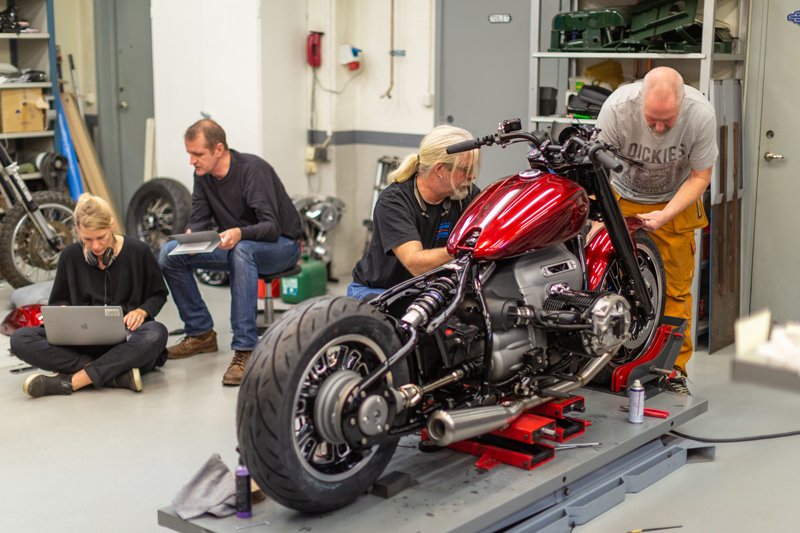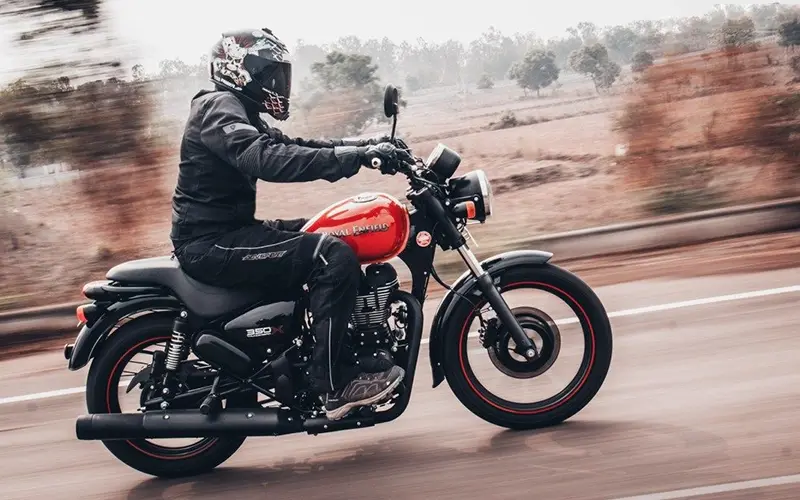There’s something magical about the freedom that comes with riding a motorcycle—feeling the wind rush by as you take on the open road. The thrill of the ride is hard to beat. But as any seasoned rider knows, this freedom comes with responsibilities. One of the most pressing issues that many motorcycle enthusiasts face, especially during the summer months or heatwaves, is the dangerous effect of extreme heat on both the rider and the motorcycle.
Motorcycling in extreme heat can quickly go from exhilarating to perilous. While riding under the scorching sun might seem like fun at first, it can quickly lead to fatigue, dehydration, and even more serious health risks. Not only does heat affect your physical well-being, but it also impacts your bike’s performance. In this blog, we’ll dive into why riding in extreme heat is so dangerous, how it affects your body, your motorcycle, and what steps you can take to stay safe while enjoying your ride.
The Hidden Dangers of Extreme Heat on Your Body
When temperatures climb, riding a motorcycle can become more dangerous than you might initially think. While you might feel the wind cooling you down while cruising, the reality is that your body can get dangerously overheated if you’re not careful.
Heat Exhaustion and Dehydration
One of the most significant risks of riding in extreme heat is dehydration. The combination of the hot environment, the heat of the engine, and the friction of the road can make it easy to forget that you need to drink plenty of water. When riding, your body loses water through sweat, and without replenishing those fluids, dehydration can set in quickly. Dehydration leads to a variety of symptoms like dizziness, weakness, and confusion, all of which can impair your ability to ride safely.
In some cases, dehydration can lead to heat exhaustion, which occurs when your body overheats and is unable to cool itself efficiently. Early signs of heat exhaustion include heavy sweating, nausea, rapid pulse, and weakness. It can escalate to heatstroke, which is much more severe and can lead to confusion, loss of consciousness, or even death if not treated promptly.
Mental Fatigue
Heat doesn’t just take a physical toll on your body—it can also impair your mental focus. As your body works harder to stay cool, your ability to concentrate and react to your surroundings can decline. This is particularly dangerous when you’re riding a motorcycle, where every second counts. Lack of focus can lead to poor decision-making, slower reaction times, and even accidents.
When you’re riding in high temperatures, you might find yourself wiping sweat from your eyes, squinting from the sun, or feeling fatigued. This mental fog can impair your ability to spot road hazards, make quick decisions, and properly navigate turns. It’s essential to recognize when your mental clarity is starting to diminish.
Heatstroke: The Ultimate Danger
The most serious consequence of prolonged exposure to high heat while riding is heatstroke. Unlike heat exhaustion, which is treatable if caught early, heatstroke is a medical emergency. It occurs when your body’s temperature rises to dangerous levels (104°F or higher) and can no longer regulate itself. Symptoms of heatstroke include confusion, dizziness, a rapid pulse, flushed skin, and in severe cases, unconsciousness.
If heatstroke sets in, it’s crucial to get immediate medical help. It’s a life-threatening condition that requires rapid cooling and intervention.
How Extreme Heat Affects Your Motorcycle
As if the heat didn’t affect your body enough, extreme temperatures can also take a toll on your motorcycle’s performance. The heat impacts several components of your bike, including the engine, tires, and fluids, which can lead to overheating, tire wear, and mechanical failure.
Overheating Engine
Motorcycles rely on cooling systems to keep their engines running smoothly. When temperatures are high, the engine can overheat, especially if it’s working harder than usual, like during long rides or when stuck in traffic. An overheated engine doesn’t just compromise performance—it can also lead to a complete engine failure. Overheating can cause the engine to seize up, which could leave you stranded or, worse, cause permanent damage to the motorcycle.
In extreme heat, it’s essential to keep an eye on your engine’s temperature gauge. Make sure your motorcycle’s cooling system is functioning properly before embarking on a long ride, and always monitor for any warning signs that your bike may be overheating.
Tire Pressure and Performance
Another critical aspect affected by heat is your tires. Extreme heat causes the air inside your tires to expand, which can increase the tire pressure. Overinflated tires are less effective at gripping the road, making your ride more unstable and reducing the effectiveness of your braking. High temperatures can also cause your tires to wear out faster, as the rubber becomes more brittle and less capable of withstanding the friction of the road.
In hot weather, it’s vital to check your tire pressure before you hit the road. Make sure your tires are properly inflated to avoid poor handling, tire blowouts, and increased wear and tear.
Brake Fluid and Performance
Heat also has an effect on your motorcycle’s brake fluid. When brake fluid gets too hot, it loses its effectiveness, which can result in decreased braking performance. If the brake fluid boils, your bike’s brakes can feel spongy or unresponsive. This can be incredibly dangerous when you’re riding in hot conditions where quick stopping is crucial.
Before heading out on a ride, ensure your brake fluid is topped up and in good condition. If it’s been a while since you checked, it might be worth inspecting the brake system for any signs of wear or damage.
How to Stay Safe When Riding in Extreme Heat
Now that we understand the risks of riding in extreme heat, let’s explore some practical tips to help you stay safe during those hot rides.
1. Stay Hydrated and Take Breaks
Hydration is key to staying safe in the heat. Before heading out, drink plenty of water, and keep a bottle on hand during your ride. Stop regularly to hydrate and give your body a chance to cool off. The more breaks you take, the better you’ll feel on long rides. During stops, try to find shaded areas or air-conditioned spaces to cool down.
2. Wear Protective Gear Designed for Hot Weather
It might seem tempting to ride in light, loose clothing to stay cool, but protective gear is essential for your safety, especially in extreme temperatures. Fortunately, there’s gear designed specifically for hot weather, such as breathable mesh jackets, ventilated gloves, and lightweight helmets that provide airflow without sacrificing protection. Don’t skip the gear—protection from the heat is important, but protection from accidents is crucial.
Choose gear that’s made for the climate, and avoid wearing heavy, dark clothing that will absorb heat. Lighter colors reflect sunlight and help keep your body cooler. Make sure your gear is designed to wick away sweat and promote airflow to keep you comfortable on long rides.
3. Check Your Motorcycle Before You Ride
Regular maintenance is key to ensuring your motorcycle performs well, especially in hot weather. Before you set out, make sure to check your tire pressure, engine temperature, and brake fluid. Keep an eye on the coolant levels and ensure your bike is running smoothly. It’s always a good idea to get your motorcycle serviced regularly to prevent any issues that may arise due to heat.
4. Know the Signs of Heat Exhaustion
It’s important to recognize the early symptoms of heat exhaustion so you can take immediate action. Symptoms include dizziness, nausea, sweating excessively, and feeling lightheaded. If you experience these symptoms, pull over to a safe location, get off the bike, and cool down immediately. If you feel dizzy or faint, it’s best to seek medical attention.
5. Ride During Cooler Hours
If you’re heading out for a long ride, try to plan your trip during the cooler parts of the day—early morning or late evening. This way, you can avoid riding in the peak heat of the afternoon, when temperatures are at their highest. If possible, consider limiting your riding to these cooler times to reduce the risk of overheating and fatigue.
Conclusion: Ride Smart, Ride Safe
Riding in extreme heat can be one of the most enjoyable experiences when you take the right precautions. But it’s essential to be aware of the dangers that come with high temperatures. Whether it’s dehydration, overheating, or your bike’s mechanical stress, the risks are very real, and understanding how to mitigate them is crucial.
At Aliwheels, we know how much you value your bike and your ride. That’s why we’re here to offer not only high-quality motorcycle parts and accessories but also expert advice to keep you safe and prepared for any conditions, including the extreme heat. With proper hydration, the right gear, regular bike maintenance, and a few smart riding habits, you can stay safe and enjoy the thrill of the open road—no matter how hot it gets.
Remember: It’s not just about getting from point A to point B. It’s about enjoying the ride safely and ensuring that every trip is as smooth as it is thrilling. Stay cool, stay safe, and keep riding!










